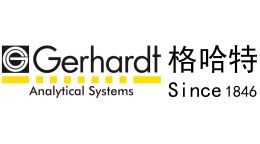3种不同配方的紫莓香米粉速溶饮品中蛋白质、脂肪、粗纤维含量的检测
检测样品 大米
检测项目 营养成分
参考标准 GB 5009.5 食品安全国家标准 食品中蛋白质的测定
方案详情文
智能文字提取功能测试中
双滚筒干燥机生产碎紫莓香米(BR)粉及其在速溶饮料开发中的应用Broken Riceberry (BR) Powder Production Using a Double Drum Dryer and Its Utilization in the Development of Instant Beverages粗脂肪含量的检测依据索氏提取法用石油醚做为试剂,在Gerhardt格哈特公司EV6 AII/16经典标准索氏提取器上进行。Crude fat (AOAC 948.15) was determined using the Soxhlet extraction method with diethyl ether as solvent using Soxhlet extraction apparatus (Gerhardt, EV16, Konigswinter, Germany). 粗蛋白含量的检测依据凯氏定氮法,在Gerhardt格哈特公司 维普得Vapodest 30s 凯氏定氮蒸馏仪上进行。Crude protein (AOAC 920.87)was determined using the Kjeldal method using distillation unit (Gerhardt, Vapodest 30s, Konigswinter, Germany). 粗纤维含量的检测使用Weende温德体系酸碱洗涤法(使用1.25%硫酸+1.25%氢氧化钠常压微沸状态各洗涤30分钟),在Gerhardt格哈特公司 FibreBag费博包 FBS6小型快速纤维测定器上进行。Crude fiber (AOAC 978.10) was determined as the organic residue after sequential digestion with 1.25% H2SO4 and with 1.25% NaOH using fiber extraction unit (Gerhardt, EV1, Konigswinter, Germany).2 of 11Processes 2022,10,341 Citation: Rittisak, S.;Charoen,R.;Savedboworn, W. Broken Riceberry (BR) Powder Production Using a Double Drum Dryer and Its Util i zation in the Development of Instant Beverages. Processes 2022, 10,341. https://doi .org/10.3390/pr10020341 Academic Editors: Vlad Muresan and Adriana Paucean Received : 20 J anuary 2022 Accepted: 9 February 2022 Published: 11 February 2022 Publisher's Note: MDPI stays neutral with regard to jurisdictional claims i n published maps and institutiona l af fi l -iations. Copyright: @ 2022 by the authors.L i censee MDPI, Basel, Switzerland.This article is an open access article distr i buted under the terms and conditions of the Creative Commons Attribution (CC BY) l icense (https://creativecommons.org/licenses/by/4.0/) Sriwiang Rittisak 1*D, Ratchanee Charoen 1@D and Wanticha Savedboworn2D Departmen t of Innovation and Product Development Technology, Faculty of Agro-Indus t ry , King Mongkut's University of Technology North Bangkok, Prachinburi 25230, Thailand;ratchanee.c@agro.kmutnb.ac.th 2 Department of Agro-Industry Technology and Management, Faculty of Agro-Industry, King Mongkut's University of Technology North Bangkok, Prachinburi 25230, Thailand; wanticha.s@agro.kmutnb.ac.th 米 Correspondence: sriwiang.t@agro.kmutnb.ac.th; Tel.: +66-8-2328-4891 Abstract: This study was designed to examine broken riceberry (BR) powder production through the use of a double drum dryer. There were two stages involved: (1) to study the optimized drum drying condi t ions for BR powder using response sur f ace methodology (RSM), and (2) to utilize BR powder for the development of instant beverages. According to the results, the optimum drum drying condition was a drum temperature of 125°C and drum speed of 1.0 rpm. Under these conditions, BR powder contained moisture=5.81%, water activity =0.494, total color difference 15.45, DPPH scavenging activity = 73.93%, water solubility index (WSI)=52.33%, and water absorption index (WAI)=10.52.For the utilization of BR powder for developing instant beverages, the produc t quality was l ight pur-ple in color, water activity = 0.354, DPPH scavenging activity= 45%, WSI=65.75%, and WAI = 12.25.The developed i nstant beverage contained 4.28% moisture, 13.89% protein, 12.42% fat, 4.23% f iber,and 2.23% ash. The microbial properties were <10 CFU/g for aerobic plate count and yeast and mold.The overall liking score was like moderately’. This study indicated that the BR powder is of good quality and has potential in the beverage industry. Keywords: broken riceberry powder; double drum dryer; product development; instant beverage;utilization; response surface methodology; optimization; antioxidant activ i ty; sensory attributes 1. Introduction Riceberry is one of the more valuable rice varieties in Thailand, with high antioxidant properties and other significant constituents offered to the consumers [1]. The consumption of riceberry is increasing because of its health benefits. Riceberry, or Oryza sativa, is a cross-bred rice strain with a deep purple appearance. Its origins involve the Jao Hom Nin variety of non-glutinous purple rice, noted for its antioxidant qualities, and the Khao Dawk Mali 105 variety of rice, noted for its fragrance [2]. Riceberry was original first produced by Kasetsart University in Thailand, at i ts dedicated Rice Science Center [3]. During the riceberry rice milling process, about 20-30% of rice grains break and become the major by y --p P1roduct known as rice grits or broken rice. A high proportion of broken riceberry (BR) i s sold as raw material for animal feed or ingredients for food products at very low prices [4]. The principal by-products of rice production include rice bran, rice husk, and broken rice. These by-products each offer potential benefits as nutrients or through their medicinal properties. Although they are typically discarded during the process of milling, these by-products, especially the edible broken rice, can be used to create products such as rice flour, rice milk, rice starch, rice puddings, rice cakes, rice glue, and so forth. This is an important consideration given that it is anticipated that rice demand levels will remain high in the future as populations continue to rise in countries where rice is a staple [5]. One key process employed to alter eyPI f lour or starch to enhance its solubility and capacity to absorb water is pregelatinization. The procedure also i mproves the pasting property and makes storage more reliable, and so the technique allows the starch or flour to be used in various food products. The procedure requires heat which comes from a spray dryer or drum dryer, or in some cases an extruder [6]. Following the process of pregelatinization,t here is a clearly notable change in the flour or starch in terms of its physicochemical and functional properties. I t can be observed, for example, that after pregelatinization, the level of water absorption is enhanced along with the cold-water solubility when compared to the original starch or flour form [6]. A number of pregelatinization techniques exist, but the cheapest and simplest involves drum drying [7]. In the food sector, a double drum dryer is more commonly employed because of its greater suitability when used with different types of materials. This technique is highly suitable when used with liquid feedstock forms such as slurries, pastes, or solutions,and can help to create the finished product in the form of flakes or powders, making the approach different to other drying methods [8,9]. The resulting pregelatinized f lour therefore has physicochemical properties which are governed by the raw material source and the parameters appl i ed for the process of drum drying [6]. The appl i cable parameters comprised f ilm thickness, feed rate, the surface temperature and speed of the drum, as wel l as the gap. The outcomes when the drying temperature of the drum was altered in the range of 115-135 °C were investigated by Supprung and Noomhorm [10], who also conducted tests when varying the holding time (14-84 s) as well as the solid content of the slurry (20-40%)to assess the physicochemical properties of rice flour and starch obtained from Khao Dawk Mali 105 rice. It was discovered that with increasing solid content i n the slurry, the rice flour and starch showed a decline in gelatinization degree, water absorption index, and the initial peak viscosity, whereas there was a rise in both the moisture content and water solubility index. When the holding times were extended, t he degree of gelatinization also increased, but no significant influence in any variable was recorded in response to changes in the drum drying temperature. Further work conducted by Ruttarat t anamongkol e t al. [11] used flours from orange-and purple-flesh sweet potato in testing their quality at different drum drying temper-atures (80 °℃, 95°C, 110°C) and speeds (3 rpm, 5 rpm, 7 rpm). The f indings revealed a decline in both flour types' moisture content at lower drum speeds and higher drying temperatures. In the case of samples of sweet potato flour for which the drum speed was 3 rpm and the drying temperature was 95°C, the highest l evels of antioxidant activity and phenolic content were recorded. However, f ur t her increasing the drying temperature to 110 °C resulted in a significant drop in both antioxidant activity and phenolic content,potentially as a consequence of phenolic compound degradation which normally takes place at higher temperatures. Wiriyawattana et al. [12] made similar f indings when assessing the influence of the drum drying process upon pregelatinized riceberry f lour in terms of the antioxidant prop-erties and other physical qualities. When the drum dryer was employed to produce the pregelatinized riceberry flour, the color was then darker and the WAI (water absorption index) and SP (swelling power) values i ncreased, although the viscosity was found to be lower than was the case for the unheated riceberry flour. As the drum drying temperatures were further increased (110-130°C), these changes became more apparent, although it was also noted that there is also a reduced capacity for pregelatinized riceberry f lour to resist thermal treatments and stress. It has also been reported that for riceberry flour, a drum drying temperature of 110 °C brought about smaller decreases in total phenolic content and antioxidant activity than was the case at greater temperatures of 120 °C and 130°℃. This current research sought to produce a novel instant beverage based on riceberry powder. This f irst required the riceberry to be milled to produce the powder prior to drum drying for pregelatinization. The resulting pregelatinized riceberry flour could then be employed to create the instant beverage. At different drum drying temperatures and drum speeds, the heat involved would affect the physical properties of the riceberry powder along with i ts antioxidant qualities to varying extents. This study aimed to establish with greater precision the effects of the drum drying process when varying the drum speeds or temperatures because the literature contains l ittle information in this area, especially in the context of developing i nstant beverages. 2. Materials and Methods 2.1. Materials In this study, the broken riceberry (BR) was supplied by the Allricesurin Brand, located in Surin Province, Thailand. Full fat mi l k powder, fiber creamer, cocoa powder, vani l la powder,and pandan powder were purchased f rom loca l markets in Prachinburi province. Erythritol and sucralose were purchased from Krungthepchemi Co., Ltd., Bangkok, Thailand. 2.2. Reagents Sigma-Aldrich (St. Louis, MO, USA) supplied the 1,1-diphenyl-2-picrylhydrazyl (DPPH) employed in this research, while the remainder of the chemicals used were all of analytical grade. 2.3. Study of the Optimal Process Conditions of Broken Riceberry (BR) Powder Using a DoubleDrum Dryer The process for preparing BR powder (Figure 1) involved washing and soaking the BR in the ratio of rice to water of 1:2 w/w for 4 h, t hen draining off the water. The BR was then blended with water (ratio of BR to water, 1:10) using a food processor (Sharp,EM-ICE2,Samutprakarn, Thailand) for 5 min at a speed of 17,000 rpm. It was then heated to 80°℃for 40 min with a 1700-W electric hot plate (Imarflex, IF-404, Bangkok, Thailand) before subsequently drying using a double drum dryer (electric heating, DD-D6L12-HT-INV,Bangkok,Thailand). A centrifugal mill was then used for the milling process (Retsch,ZM 200, Haan, Germany) prior to sieving using No.140 mesh to achieve particle sizes of 105 um. Figure 1. The process of preparing BR powder and i ts product . A full factorial design consisting of three levels with two variables (3-) was used to measure the effects upon the process conditions of the drum temperature and rotation speed, making use of three central point replicates. Replicate center points are useful (1) to estimate pure error for a lack-of-fit test, (2) to provide a measure of process stability and inherent variabi l ity, and (3) to check for curvature in the response model [13]. The independent variables were the drum temperature (120 °C, 125°C, 130°C) and the drum rotation speed (0.6, 0.8, 1.0 rpm), while the spacing between the two rol l ers was 0.10 mm. The qual i ty analysis of BR powder was conducted. Evaluation of the moisture content (AOAC 925.10) calculated based on weight loss after oven-drying at 130 ℃ followed the guidelines established by the Association of Official Analytical Chemistry [14]. The product water activity was measured with a water activity meter (AQUA LAB Model series 3TE)obtained from Meter Group, Inc. (Pullman, WA, USA). The color was evaluated using a colorimeter (Hunter Lab Model Color f lex 45/0) from Konica Minolta (Vienna, VA, USA) in the CIE Lab system using CIE Standard Illuminate D65, di:8, and CIE:2 Standard Observer,where L* indicates lightness; a* and b* show opposing color coordinates, whereby negative a* is green and positive a* is red; and negative b* represents blue and posi t ive b* represents yellow. I t i s then possible to calculate the total color difference (AE) to compare the color (L*, *,b*) of BR prior to drying with the color (L2,a,b2) of BR after drying by following Equation (1): Performance of the DPPH scavenging assay f ollowed the approach of Daiponmak et al. [15],while the guidelines offered by Anderson et al. [16] were used to determine WSI (water solubility index) and WAI (water absorption index). The response variables (moisture content (Yi), water activity (Y2), total color difference (AE) (Y3), DPPH scavenging activity (Y4), WSI (Y5), and WAI (Y6)) are represented using the second-degree polynomial shown in Equation (2) as follows: where Y; is the response variable (Y1-Y6), Bo is a constant, p; are regression coefficients associated with l inear effects, pij are regression coefficients associated with interaction effects, and pi are regression coefficients associated with quadratic effects. Meanwhile, the coded l evels of X;and X; show the drum temperature (Xi) and drum rotation speed (X2) as recorded i n the experiments. Minitab Statistica l software (Minitab Pty Ltd., Inc., Sydney,Australia) was used to design the experiments and to use the second-order polynomial equations to develop the response surface graphs on the basis of the experimental data.The desirabi li ty func t ion was then used in the simultaneous opt i mization procedure so as to emphasize water activity < 0.6 and moisture content < 7% in line with Thai Industrial Standard No. 315-2005. In addition, the optimization of drum drying condi t ions was considered for high antioxidant activity, WSI, and WAI with a low total color difference indicating good BR powder quality. The sui t ability of the second-order polynomial mode l fit was demonstrated through a contour plot, revealing the associations between experimental levels and responses in the case of each of the study variables. The BR powder sample was produced in three replicates. The product analyses were conducted in triplicate (n=3). Analysis of variance and significant differences among means and correlation analysis were performed with one-way ANOVA. The significant level was based on the total error criteria with a confidence level of 95%. 2.4. Study of the Utilization of Broken Riceberry (BR) Powder for the Development ofInstant Beve rages The utilization of BR powder was applied in instant beverages as a food model.The basic formulation of the instant beverage was selected as described by Yuthavisuthi et al. [17]. Jasmine brown rice powder and Job's tears powder were substituted by BR powder. Non-dairy creamer was substituted by fiber creamer. Three f lavors (cocoa powder,vani l la powder, and pandan po Var wder) were developed in formulations (Table 1). The prototypes of instant beverages using BR powder were prepared by mixing all dried ingredients using a cubic mixer (SEG, NANA-191940, Bangkok, Thailand). They were then tested by 50 untrained panel members, who were asked to rate the formulas by allocating scores on a 9-point hedonic scale (1 = extreme dislike to 9 = extreme l ike) in terms of color, odor, f lavor, and overal l liking score [18]. Each instant beverage (in a sachet) was brewed with hot water (ratio of instant beverage to hot water = 25 g/120 mL) and subsequently an amount of 20 mL was poured into a 1 oz. plastic cup with a lid. Three different instant beverage sample types were prepared and then coded with a three-digit random number and served to each panelist at 65-75°℃ [17]. Table 1. Instant beverage formulations from BR powder i n various flavors. Ingredient Formulation A(%) Formulation B(%) Formulation C(%) BR powder 52.50 52.50 52.50 Full fat milk powder 16.00 16.00 16.00 Fiber creamer 29.55 29.55 29.55 Erythritol 3.50 3.50 3.50 Sucralose 0.05 0.05 0.05 Cocoa powder 1.30 一 一 Vanilla powder 1.30 一 Pandan powder 1.30 Data were analyzed with SPSSversion 26.0 (SPSS Inc. and IBM Co., Chicago, IL,USA) based on one-way ANOVA procedure. Results are displayed as mean ± standard deviation. 2.5. Quality Analysis of the Developed Instant BR Beverage The qual i ties of the developed i nstant BR beverage were determined in t erms of water activity (AQUA LAB Model series 3TE), color values (CIE, L* a*b* values), water solu-bility index (WSI), and water absorption index (WAI) [16]. Proximate analysis (moisture,crude fat, crude ash, crude protein, crude f iber) was carried out in li ne with the guidelines of the Association of Officia l Analytica l Chemistry [14]. To determine moisture content (AOAC 925.10), samples were dried using oven-drying at 130 °C to constant weight. Crude fat (AOAC 948.15) was determined using the Soxhlet extraction method with diethyl ether as solvent using Soxhlet extraction apparatus (Gerhardt, EV16, Konigswinter, Ger-many). Crude ash (AOAC 923.03) was determined using incineration in muffle furnace at 550 °C (Carbolite, AAF1100, Neuhausen, Germany).Crude protein (AOAC 920.87)was determined using the Kjeldalh method using distillation unit (Gerhardt, Vapodest 30s, Konigswinter, Germany). Crude fiber (AOAC 978.10)was determined as the organic residue after sequential digestion with 1.25% H2SO4 and with 1.25% NaOH using fiber extraction unit (Gerhardt, EV1, Konigswinter, Germany). The equation given below was then employed to determine the carbohydrate content: Carbohydrate (%)= 100 - (moisture % + crude f at % + crude protein %+crude fiber % + crude ash %) (3) The product quality was evaluated by microbial aerobic total plate count, yeast,and mold following the Bacteriological Analytical Manual methods [19]. Percentage of inhibition for antioxidant activity was evaluated using the DPPH scavenging assay in line with the approach of Daiponmak et al.[15]. 3. Results and Discussion 3.1. Model Fitting The mean value of moisture content, water activity (aw), tota l color difference (△E),DPPH, WSI, and WAI of the 11 process condi t ions, with triplicates in the central point of the independent variables, varied from 4.55-8.43%, 0.232-0.549,13.60-18.58,58.62-80.26,32.10-53.09, and 6.25-11.55, respectively (Table 2). The coefficients of the second-degree polynomia l equation (Table 3) were determined on the basis of the data obtained through the experiments, while the R2 value for t he moisture content response, water act i vity (aw),total color difference, DPPH,WSI , and WAI were 0.955,0.972, 0.943, 0.892, 0.965, and 0.941,respectively. Joglekar and May [20] suggested that for a good f it of a model, R2should be at least 0.80. This would mean that the model could be used to predic t the response. In the case of a high regression coefficient and small p-value, i t can be argued that the effect upon the response variable in question would be of greater significance [21]. To determine the model suitability for each of the di f ferent responses, a l ack-of-fit test was carried out.The resulting p-value was found to be greater than the 0.05 threshold, thus demonstrating that an adequate f it was offered for the experimental data by t he model, as can be observed in Table 3. Table 2. Structure of the factorial design and the dependent variable responses under drum drying process conditions (independent variables). Test Run No. Independent Variables Dependent Variables D Drum Moisture DPPH WSI WAI Temp.(°C) Drum Speed (Min) Content (%) aw (AE) (%Inhibition) (%) X1 X2 Y1 Y2 Y3 Y4 Y5 Y6 1 120 0.6 5.55 0.241 16.00 70.55 32.10 6.25 2 120 0.8 7.35 0.427 15.32 71.57 40.38 8.01 3 120 1.0 8.43 0.435 13.60 80.26 46.72 8.79 4 125 0.6 5.14 0.232 17.25 65.19 35.07 7.53 5 125 1.0 6.02 0.509 15.16 72.47 51.76 10.29 6 130 0.6 4.55 0.244 18.58 58.62 35.64 7.76 7 130 0.8 4.73 0.402 18.21 65.21 39.98 9.09 8 130 1.0 5.21 0.549 18.40 71.84 53.09 11.55 9 125 0.8 5.25 0.449 15.93 72.51 39.38 7.80 10 125 0.8 5.44 0.422 15.45 72.19 39.77 7.63 11 125 0.8 4.93 0.445 15.00 73.79 38.07 8.23 Note:T est runs were carried out randomly. Based on tripl i cate measurements. Standard deviation (SD) range was 0.001-1.23. Table 3. ANOVA (analysis of variance) of the dependent variable predictive regression model. Predictive Regression Model of Responses R2 Source of Variation p-Value Y1: Moisture content Model 0.002* =340.7930-5.5998X1+68.1952X2+0.02326X1²+3.0395X2²-0.5550X1X2 0.955 Lack of fit 0.300 Y2: aw Model 0.001* =-6.8296+0.1124X1-0.5358X2-0.0005X2-1.4290X22+0.0278X1X2 0.972 Lack of fit 0.188 Y3 : Total color difference (△E) Model 0.003* =567.1850-8.5990X1-84.8561X2+0.0340X2+7.2434X22+0.5550X1X2 0.949 Lack of fit 0.445 Y4: DPPH Model 0.019* =-588.7650+11.6103X1- 49.3020X2-0.0528X1²-22.0066X2-+0.8775X1X2 0.892 Lack of fit 0.062 Y5: WSI 0.965 Model 0.001* =-89.3051+2.5484X1-166.0150X2-0.0112X1+73.8816X2+0.7075X1X2 Lack of fit 0.148 Y6: WAI Model 0.009* =109.3600-1.5164X1-51.6664X2+0.0058X1²+12.6118X2+0.3125X1X2 0.941 Lack of fit 0.244 Note: * Statis t ica l significance i s i ndicated when p ≤0.05. 3.2. The Effect of Drum Temperature and Drum Rotation Speed on Dependent Variables The fac t ual model is plotted as a two-dimensional surface representing the response (moisture content, aw, total color difference, DPPH, WSI , and WAI) (Figure 2). Figure 2a,b illustrate contour plots showing the effect of drum drying conditions on the water activity and the moisture content, indicating a reduction in both values with increasing drum temperature and decreasing drum rotation speed. Increasing the drum surface temperatures and decreasing drum rotation speeds allowed the BR slurry to come into contact with the drum surface for a longer period of time, making i t possible to increase the dehydration rate of the water in the BR powder. Similar results have been reported in previous studies on j ackfruit seeds [22]. The total color difference of BR powder increased with increasing drum temperature and decreasing drum rotation speed (Figure 2c). On the other hand, the antioxidant activity (DPPH) of BR powder decreased with increasing drum temperature and decreasing drum rotation speed (Figure 2d). Changes in total color difference of BR powder and antioxidant ac t ivity may have been the result of the changes in the material surface areas which were contacted when subjected to high temperatures as part of the drum drying procedure. Furthermore, the changes i n color can be brought about through chemica l reactions which resul t from the thermal treatment, such as the Millard reaction.An increase in the heating t ime and temperature could enhance the browning reaction. At high temperatures, it was also observed that antioxidant activity declined significantly. This matched the findings of Kullamathee et al. [23], who revealed that following the process of drum drying, there was a notable decrease i n total polyphenol content as well as the DPPH scavenging activity recorded for the young rice f lakes. To show the effects of the drum drying conditions, a contour plot of WSI and WAI is shown in Figure 2e,f. For water solubi l ity index (WSI), it was found that the water solubility index increased when the drum rotation speed and the drum temperature increased. Using a high drum drying temperature caused the BR powder to have a more porous appearance and increased the contact area with the water. Thus, i t improved the water solubility [24,25]. In a similar result, the water absorption index of BR powder increased when the drum rotation speed and the drum surface temperature increased (Figure 2f). This may occur due to the carbohydrate content of riceberry rice when heated to high temperatures. Therefore, the hydrogen bonds between the starch molecules are broken, which can trap more water, resulting in the BR powder absorbing water well . The influence of drum drying upon both the physical properties and the antioxidant capabilities of pregelatinized riceberry flour was examined by Wiriyawattana et al. [12], who found t hat the WSI and SP (swelling power) could reach a much higher level t han was the case for riceberry flour samples which had not been heated.It was possible to assess the volume of water within the granules or starch polymers using WAI to serve as an indicator once the maximum amount of water had been absorbed. As moisture content rose, typically as a consequence of gelatinization and lateral expansion of the starch, WSI would also increase [26]. 3.3. Optimized Drum Drying Conditon and Verification The desirability function was then used in the simultaneous optimization procedure so as to emphasize water ac t ivity < 0.6 and moisture content <7% in l ine with Thai Industrial Standard No. 315-2005. In addi t ion, the optimization of drum drying condi t ions was considered for high antioxidant activity, WSI , and WAI with a low total color difference that indicated good BR powder quality. From the results, the optimized drum drying conditions were determined as drum temperature and drum rotation speed of 125 ℃ and 1.0 rpm,respec t ively. Under these condi t ions, moisture content , water ac t ivity, tota l color difference,DPPH scavenging activity, water solubility index (WSI), and water absorption index (WAI)(predicted values) were calculated from predictive regression model (Table 3) as 6.11%,0.511,15.32,75.74%,50.54%,and 10.44, respectively. The verification studies were carried out to validate the optimization. Using optimized drum drying conditions, we produced a BR powder that contained moisture content = 5.81 ±0.25%, water activity =0.494 ±0.002,total color difference 15.45 ± 0.87, DPPH scavenging activity = 73.93 ±2.33%, water solubil i ty index (WSI)=52.33±1.20%, and water absorption index (WAI)=10.52±0.32.The observed and predicted values were within the small error range (0.8-4.9%) and did not vary at 5% level of significance, meaning that the response model was appropriate for the optimization [29]. Therefore, this BR powder was utilized i n instant beverages for further studv. 1.0 1.0 Drum temperature (℃) Drum temperature (C) Figure 2. Contour plots for (a) moisture content, (b) aw , (c) Delta E (^E), (d) DPPH, (e) WSI , and (f) WAI as a function of drum temperature and drum rotation speed. 3.4. The Utilization of BR Powder for the Development of Instant Beverages Three formulas of instant beverages from BR powder were developed in different flavors. The sensory evaluation using a nine-point hedonic scale indicated that the l ik- ing score of instant beverages in terms of odor, f lavor, and overall liking of the different three flavors (cocoa flavor, vanilla f lavor, and pandan flavor) showed significant differ-ences (p≤ 0.05). In contrast, the color liking scores of the three f lavors showed no sig-nificant differences (p > 0.05) (Table 4). Formulation B (vanilla flavor) was the best in sensory attributes and received the highest l iking score in terms of color (6.6= like mod-erately), odor (6.8= like moderately), flavor (6.8= like moderately), and overall liking (7.3= l ike moderately). Table 4. Sensory properties of instant beverage from BR powder in various f l avors. Treatment Color ns Odor Flavor Overall Liking Formulation A (Cocoa flavor) 6.4±0.6 6.0±0.4b 6.0±0.6b 6.3±0.6D Formulation B (Vanilla flavor) 6.6±0.8 6.8±0.6a 6.8±0.2a 7.3±0.2a Formulation C (Pandan flavor) 6.5±0.4 6.6±0.2a 6.3±0.6ab 6.5±0.5b Commercial brand (Natural flavor) 6.5±0.6 6.6±0.6a 6.6±0.44 6.7±0.4b Notes: ab... Mean values of the same column with different superscr i pts are significantly different (p≤ 0.05) ns Not significantly different. The comparative liking score of sensory attributes of our formulated instant BR bever-age and commercial brand revealed that liking score of formulation B was higher than the commercial brand for al l attributes, indicating i ts overall acceptability. Thus, formulation B appeared to be preferable to the commercial brand in terms of all sensory attributes. Similar to our result, Sutinium et al . [30] developed an i nstant nutritious beverage from germinated j asmine brown rice and reported the overal l liking score as 7.3 (like moderately). Therefore,the formulation B was chosen for further analysis. 3.5. The Developed Instant Beverage Quality The developed instant beverage was a f ine powder that was l ight purple in color (L*=72.10±0.62,a*= 6.76±0.19, and b* =4.43±0.08), and after dissolving in hot water it turned slightly darker. For the physical analysis, the water activity of the instant beverage was 0.354, which made it safe from spoilage caused by microorganisms [31]. The water solubility index of the instant beverage was 65.75 ±1.08%, with a 12.25±0.87 water absorption index.The developed instant beverage contained 4.28 ±0.25% moisture, 13.89 ±0.79% protein,12.42±1.05% fat, 4.23±0.23% crude fiber, and 2.23±0.15% ash. The DPPH scavenging activity was 45% i nhibition. Measurements for microbial properties were <10 CFU/g of aerobic plate count and <10 CFU/g of yeast and mold. This was within the limits recom-mended under the microbial standards set in the Thai Industrial Standard No. 315-2005. 4. Conclusions In conclusion, BR powder was produced under optimized drum drying conditions at drum temperature =125 °C and drum rotation speed=1.0 rpm. These optimized conditions provided <7% moisture content and <0.6 water activity of the BR powder. This conformed to Thai Industrial Standard No. 315-2005. The BR powder was high in DPPH scavenging activity, WSI, and WAI , and low in total color difference. From the practical point of view,the utilization of BR powder can be developed as an instant beverage with good taste and quality. However, further studies should be conducted to investigate the utilization of BR powder for other products such as instant porridge, bakery products, or Thai desserts in order to add greater value to the BR powder. Author Contributions: Conceptualization, S.R.; methodology, S.R.; software, S.R. and R.C.; valida-tion, S.R.; formal analysis, S.R. and R.C.; investigation, S.R. and W.S.; data curation, S.R.; writing-original draft preparation, S.R.; writing-review and editing, S.R. and W.S.; visualization, S.R.;supervision , S.R. All authors have read and agreed to the published version of the manuscript. Funding: This research was funded by National Science, Research and Innovation Fund (NSRF), and King Mongkut's University of Technology North Bangkok wi t h Contrac t no. KMUTNB-Basic-21-1. Institutional Review Board Statement: Not applicable Informed Consent Statement: Not applicable. Data Availabi l ity Statement: Data suppor t ing reported resulted results are avai l able upon request . Acknowledgments: This work was supported by Thailand Science Research and I nnovation, and King Mongkut's University of Technology North Bangkok with Contact no. KMUTNB-Basic-21-1. Conflicts of Interest: The authors declare no conflict of interest. References 1. Settapramote,N.;Laokuldilok, T.; Boonyawan, D.; Utama-ang,N. Physiochemical, Antioxidant Activities and Anthocyanin of Riceberry Rice from Di f ferent Location in Thailand. Food Appl. Biosci. J. 2018, 6,84-94. 2. Kongkachuichai , R.; Prangthip,P.; Surasiang, R.; Posuwan, J .; Charoensiri , R.; Kettawan, A.; Vanavichit , A. Effect of riceberry oil (deep purple oil; Oryza Sativa Indica) supplementation on hyperglycemia and change i n l ipid profile i n streptozotocin (STZ)-induced diabetic rats fed a high-f at diet. Int. Food Res. J. 2013,20,873-882. 4 Luang-In, V.; Yotchaisarn, M.; Somboonwatthanakul, I.; Deeseenthum, S. Bioactivities of organic riceberry broken rice and crude riceberry rice oil. Thai J. Pharm. Sci. 2018,42,161-168. 5. Padma, M.;Jagannadarao, P.V.K.; Edukondalu, L.; Ravibabu, G.; Aparna, K. Physico-Chemica l Analysis of Milk Prepared from Broken Rice. Int. J. Curr . Microbiol. Appl. Sci. 2018, 7,426-428.[CrossRef ] 7. Patindol, J .; Shih, F .; Ingber, B.; Champagne, E.; Boue, S. Porous r ice powder from the precipitation of gelatinized f lour or starch paste with ethanol. Starch Staerke 2012, 65,296-303. [CrossRef ] 8. Majzoobi, M.; Radi, M.; Farahnaky, A.; Jamalian, J .; Tongdang, T.; Mesbahi, G. Physicochemical proper t ies of pre-gelatinized wheat starch produced by a twin drum drier. J. Agric. Sci. Technol . 2011,13,193-202. 9. Cordova, C.; Vivanco, J .P.; Quintero, J.; Mahn, A. Effect of drum-drying conditions on the content of bioactive compounds of broccoli pulp. Foods 2020, 9,1224. [CrossRef ] 10..Supprung, P.;Noomhorm, A. Optimization of drum drying parameters for low amylose rice (KDML105) starch and f lour. Dry.Technol. 2003, 21,1781-1795.[CrossRef ] 11. Ruttarattanamongkol, K.; Chittrakorn, S.; Weerawatanakorn, M.; Dangpium, N. Effect of drying conditions on properties,pigments and antioxidant activity retentions of pretreated orange and purple-fleshed sweet potato f lours. J. Food Sci. Technol.2016,53,1811-1822. [CrossRef ] [PubMed ] 12. Wiriyawattana, P.;Suwonsichon, S.; Suwonsichon, T. Effects of drum drying on physical and antioxidant properties of r iceberry flour. Agric . Nat . Resour. 2018,52,445-450. [CrossRef ] Draper, N.R. Center points in second-order response surface designs. Technometrics 1982, 24,127-133.1 Association of Official Analytical Chemists. Official Method of Analysis , 19th ed.; Association of Of f icial Analytical Chemists:Washington, DC, USA, 2012. 15. Daiponmak, W.; Senakun, C.; Siriamornpun, S. Antiglycation capacity and antioxidant activities of different pigmented Thai rice.Int. J. Food Sci. Technol. 2014,49,1805-1810.[CrossRef ] 16. Anderson, R.A.; Conway, H.F; Pfeifer, V.F; Griffin, E.L. Gelatinization of corn grit by roll and extrusion-cooking. Cereal Sc i . Today 1969,14,4-12. 17. Yuthavisuthi,P.;Chompreeda, P.; Pirak, T. Development of Instant Beverage f rom Predigested Broken Jasmine Brown Rice and Job's Tears for Diabetic Patients. Kasetsart J . 2012,46,795-803. Peryam, D.R.; Pilgrim, F.J . Hedonic scale method of measuring f 18ood preferences. J. Food Sc i . 1957,11,9-14. Bacteriological Analytical Manual. Aerobic Plate Count, Yeast, Mold, and Mycotoxins. FDA Website. Available online: http s://www.fd a.gov/food/laboratory-methods-food/bacteriolo gi cal-analytical-manual-bam (accessed on 24 August 2021) Joglekar, A.M.; May, A.T. Product Excellence through Design of Experiments. Cereal Food World 1987, 32,857-868.20Rittisak, S.; Charoen,R.; Choosuk,N.; Savedboworn, W.;Riansa-ngawong, W. Response Surface Optimization for Antioxidant Extraction and Attributes Liking from Roasted Rice Germ Flavored Herbal Tea. Processes 2022,10,125. [CrossRef ] 22. Pua, C.K.; Hamid, N.S.A.; Tan, C.P.; Mirhosseini, H.; Rahman, R.B.A.; Rusul, G. Optimization of Drum Drying Processing Parameters for Producting of Jackfruit (Artocarpus heterophyiius) Powder Using Response Surface Methodology. J. Food Sci . Technol .2010,43,343-349. 23. Kullamethee, P.; Phumpakdee, S.; Khong-im, P; Alqurash, R.; Suwan, T. Production and Quality Evaluation of Young Thai Jasmine Rice Flake Using Drum Dryer. E3S Web Conf. 2021, 302,02008. 24. Vidovic, S.S.; Vladic, J.Z.; Vastag, Z.G.; Zekovic, Z.P.; Popovic, L.M. Maltodextrin as a Carrier of Health Benefit Compounds in Satureja Montana Dry Powder Extract Obtained by Spray Drying Technique. Powder T echnol . 2014, 258,209-215. [CrossRef ] 25. Fazaeli, M.; Emam-Djomeh, Z.; Ashtari, A.K.; Omid, M. Effect of Spray Drying Conditions and Feed Composition on the Physical Properties of Black Mulberry J uice Powder. Food Bioprod. Process. 2012, 90, 667-675. [CrossRef ] 26. Yousf, N.; Nazir, F.; Salim, R.; Ahsan, H.; Sirwal, A. Water Solubility Index and Water Absorption Index of Extruded Product from Rice and Carrot Blend. J. Pharmacogn. Phytochem. 2017, 6,2165-2168. 27. Gat, Y.; Ananthanarayan, L. Effect of Extrusion Process Parameters and Prege l atinized Rice Flour on Physicochemical Properties of Ready-to-Eat Expanded Snacks. J. Food Sci. Technol. 2015,52,2634-2645. [CrossRef ] [PubMed] 28. J i ttanit, W.; Lalitmassakul,C.; Charn-Utsar, P. Quality of Instant Congee and Energy Consumption in the Drying Process by Using Drum Dryer. J. KMUTNB 2012, 22,256-264. 29. Granato, D.; Calado,V.M.A.; Jarvis, B. Observations on the Use of Statistical Methods i n Food Science and Technology. Food Res.Int . 2014,55,137-149. [CrossRef ] 30. Sutinium, D.;Haruthaithasan, V.; Chompreeda, P. Development of Instant Nutritious Beverage from Germinated Jasmine Brown Rice for Elderly Consumers. Kasetsart J. 2008,42,88-98.
关闭-
1/11
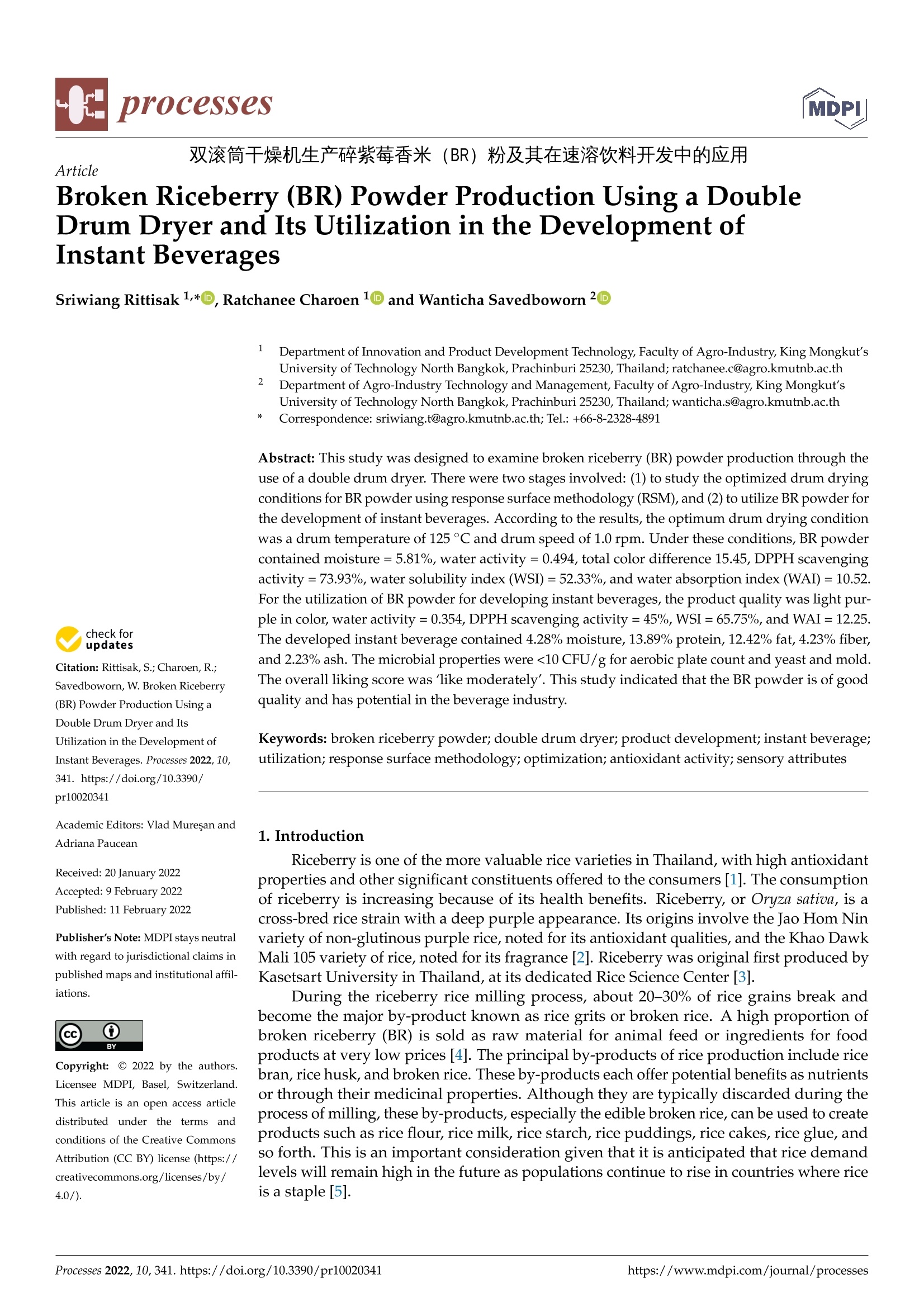
-
2/11
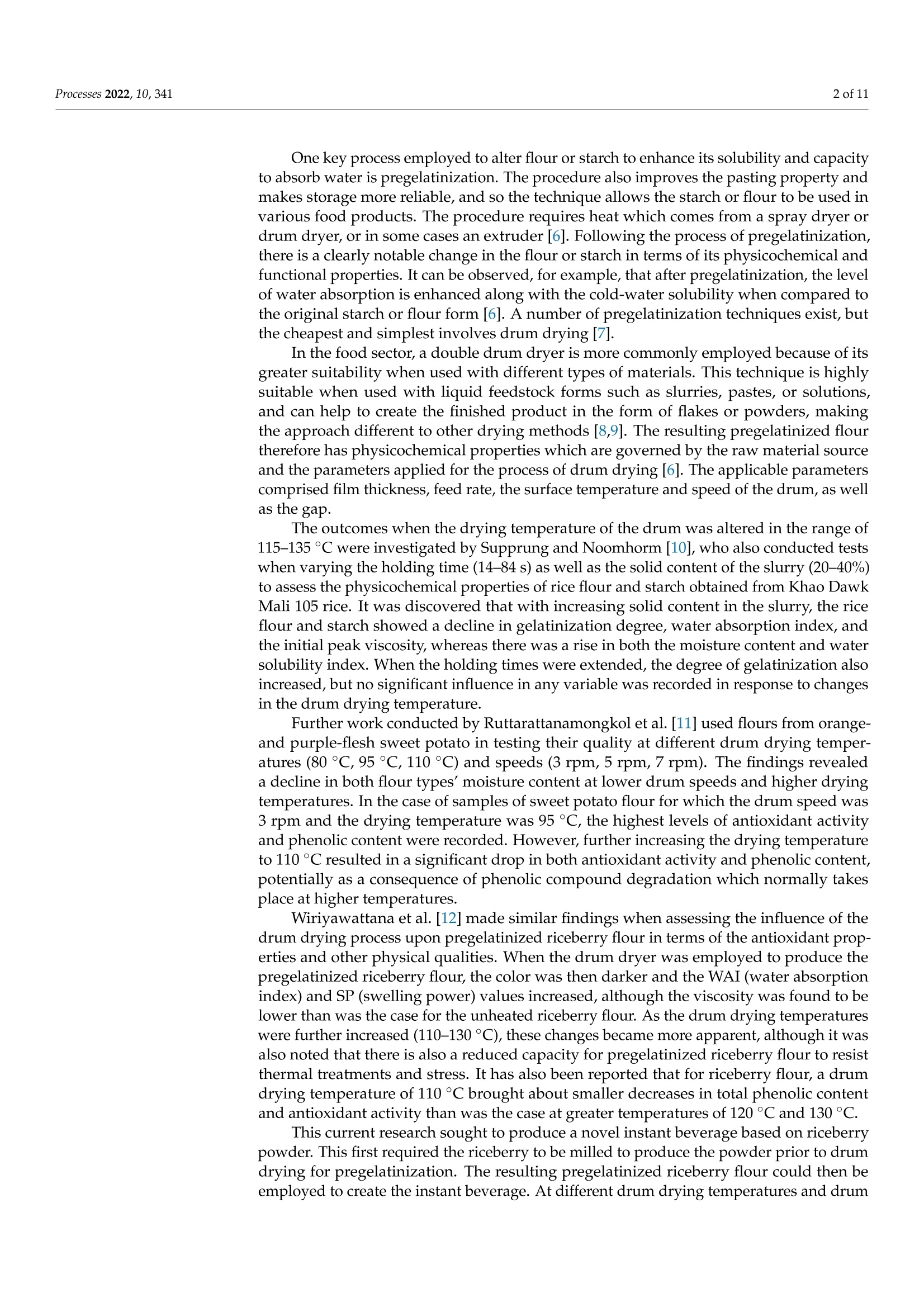
还剩9页未读,是否继续阅读?
继续免费阅读全文产品配置单
中国格哈特为您提供《3种不同配方的紫莓香米粉速溶饮品中蛋白质、脂肪、粗纤维含量的检测》,该方案主要用于大米中营养成分检测,参考标准《GB 5009.5 食品安全国家标准 食品中蛋白质的测定》,《3种不同配方的紫莓香米粉速溶饮品中蛋白质、脂肪、粗纤维含量的检测》用到的仪器有格哈特传统经典索氏提取/萃取仪EV6 AII16、格哈特快速干燥仪STL56、格哈特红外加热消解快速消化系统TTs125、格哈特自动蛋白测定仪Vap300、格哈特快速纤维测定器FBS6、凯氏定氮催化片、德国移液器MM。
我要纠错
相关方案





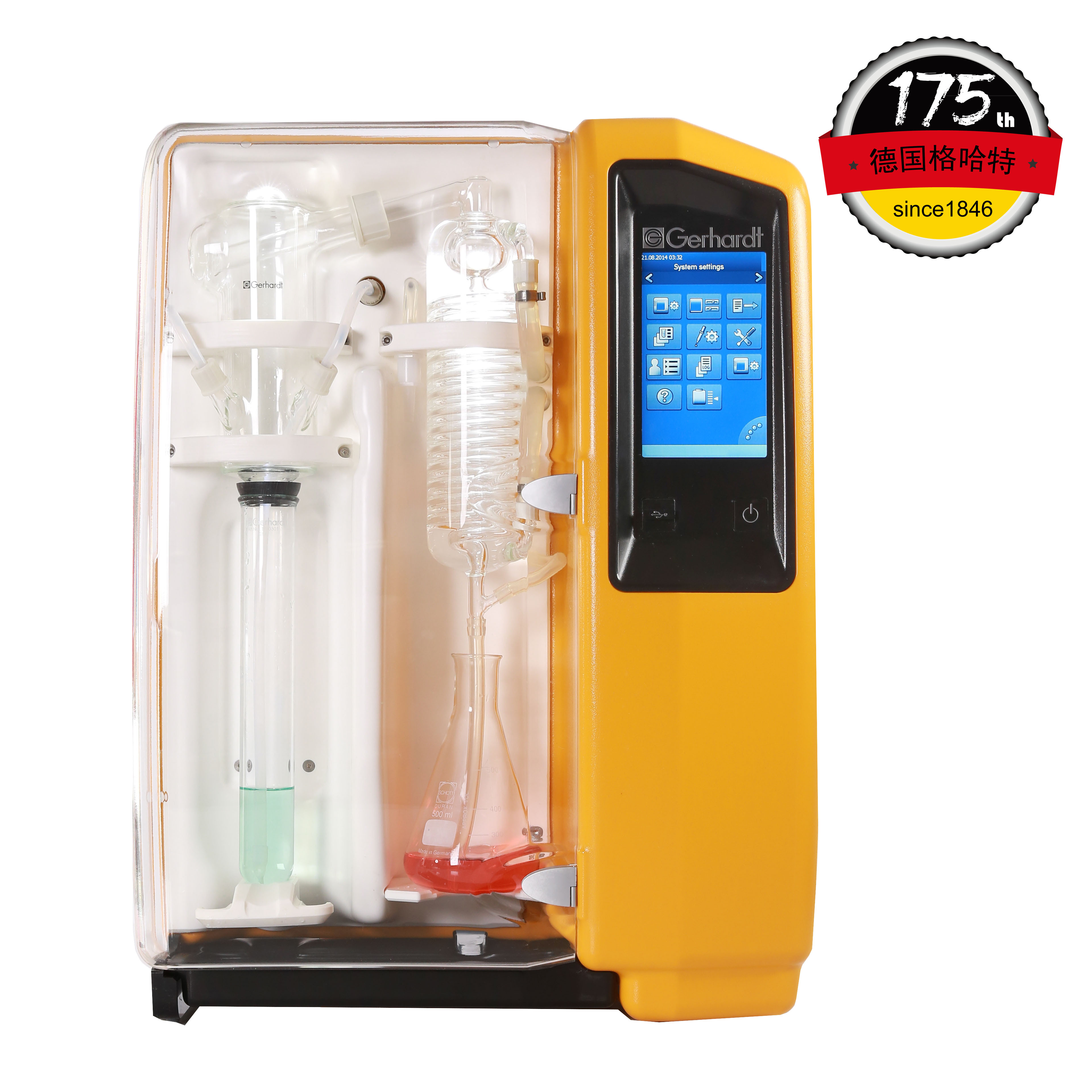

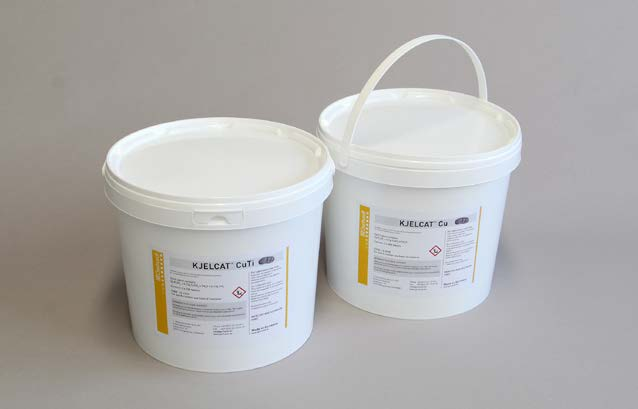
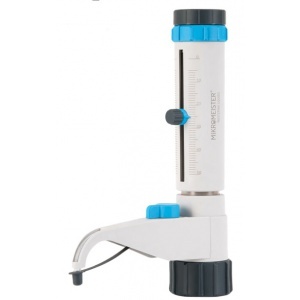

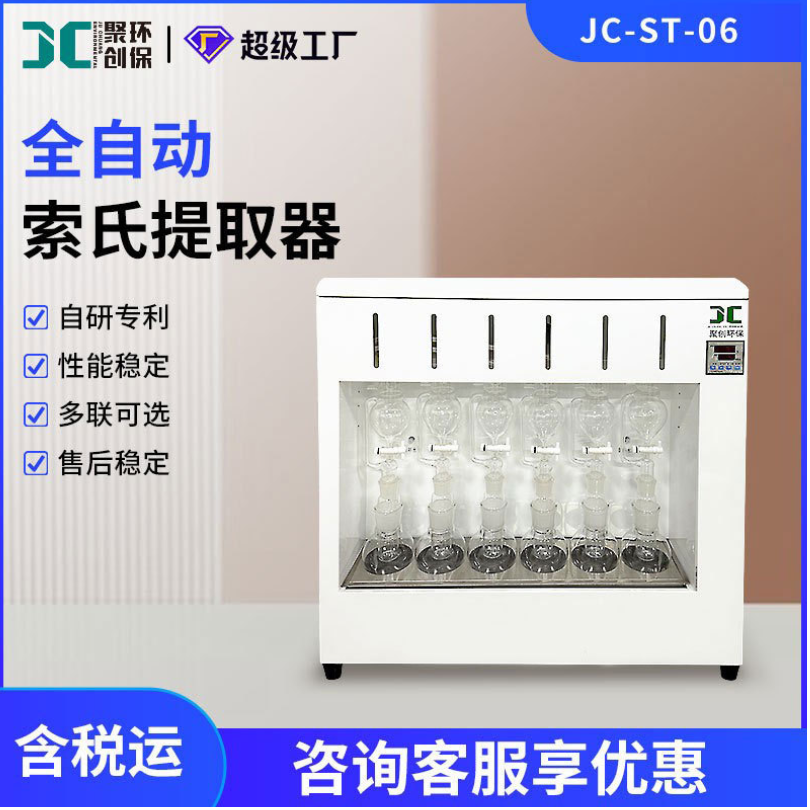






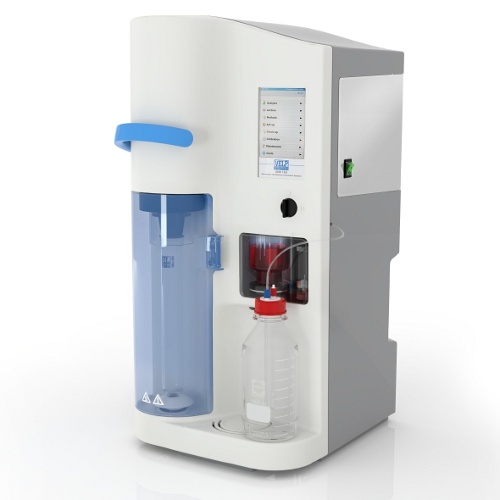


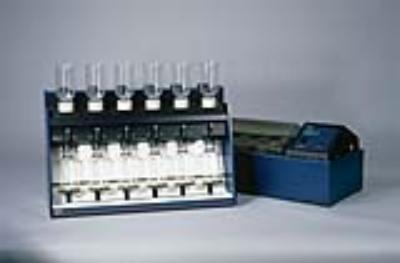

 咨询
咨询